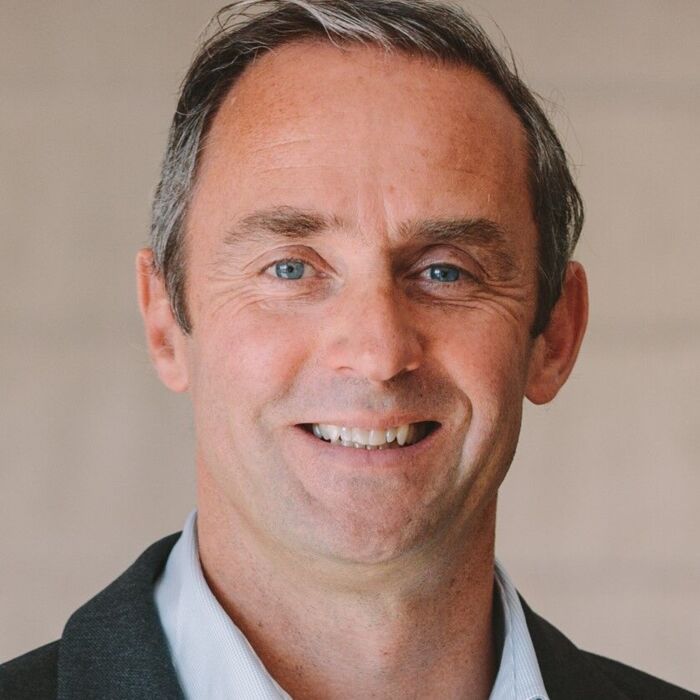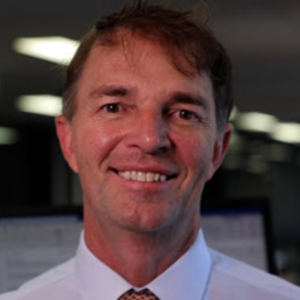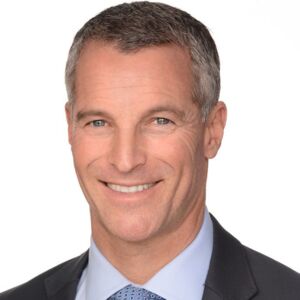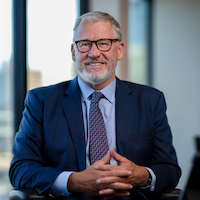Rest hires investment all-rounders
By Elizabeth Fry

Andrew Lill, the chief investment officer of $70 billion super fund Rest says the CIO role is changing and not just because investment heads have to respond quickly to more volatile markets.
Increasingly, CIOs must consider a range of technical areas as they develop more complex investment portfolios with an eye on innovation and productivity.
"It's a fascinating time to be a CIO - not just because investment markets are volatile - but because you're also, in some ways, becoming an architect, an engineer, and technician," he says.
"You're looking at the investment process from a variety of perspectives so that you can enable your people to make the best use of their experience and skills by harnessing data insights."
Constructing portfolios and managing portfolio risk gets a whole lot harder as superannuation funds grow larger and more complex.
CIOs have to manage many more moving parts. Drawing information up to a fund level across multiple asset classes is especially challenging.
For Lill, this means building up the generalist capability across the team, in line with Rest's whole-of-fund approach.
Essentially, recruiting is influenced by internalisation - how far funds are down that path and whether they have met their targets.
Accordingly, many super funds are hiring specialists from asset managers as they bring assets in-house.
But with mostly multi-asset or diversified portfolios, Lill says Rest sees a greater need for generalists who can look at the big picture from many different perspectives and build a high-conviction view of where to allocate capital.
"Even considering the internalisation we have underway - bringing global equities in-house - generalists are our biggest need and where we are looking to hire and recruit," he adds.
Like his peers around the world, Lill is certainly aware of the growing capacity for technology to enhance investment processes and enable decision-making.
"Technology is making things more efficient and it's developing all the time. It's foreseeable that eventually, artificial intelligence tools could play a role in the investment process," he says.
Lill notes that most asset owners have ongoing technology projects focused across different areas to gain an edge.
"We're all running multi-asset portfolios across different asset classes and countries using a data-driven investment process whereby we use the data insights to improve the investment process in a systematic and continuous way," he notes.
"There is still a need for human experience and skill in managing a portfolio comprising different and complex pieces, but anchoring that with data can provide a good sense of where we are today and where we want to be in the future."
He and his team use a portfolio system developed with State Street and their entity Charles River to get a good sense of Rest's position and daily exposure - likening it to how one uses GPS on an iPhone to navigate between places.
"We're focusing for the moment on it being our GPS and knowing where we are at all times before moving into that next stage of capital allocation using a data-driven process," he adds."If your investment team can harness good data and great coding skills, you can process and act on information more quickly."
Return strategies
While Rest is taking decisive actions to navigate the current high inflation environment, building a strategy for meeting return targets remains tough, since what's worked for the last 10 to 15 years may not work now.
Lill says the investment community will likely look back on 2010 to 2021 with rock-bottom interest rates and low inflation as unique.
Markets will always tell you that the riskiest time you have ever experienced is now. And you forget that you thought the last market rout was the riskiest time ever."
He should know.
Starting his career in 1994, Lill had a ring seat to the Asian financial crisis, the Asian currency crisis, the tech-crash and the global financial meltdown.
Yet, he argues that the current environment is the most challenging for investors given ten years of low-interest rates and low inflation
As the world heads into more normal times, getting back to that longer-term framework with proper scenario testing is critical.
Portfolio resilience is everything, he says.
This means more scenario plays for stagflation, energy crises, or rapid interest rate hikes and more tests to check which straegies are performing well and which act as a buffer to risk.
Scenario planning is hardly new.
But Lill argues that what's different now is the sheer number of varieties that need to be modelled.
"The last ten years have been particularly unique, so you've got to move away from your recent experience and and use the models to say what could happen if we head back to times where inflation is above 3 per cent and interest rates above 5 per cent rather than rates of 1 per cent and inflation of 1.5 per cent."
The investment chief does not waste time trying to predict the US Federal Reserve's next move.
"I feel that it's best not to be too definitive - that maybe now's not the time to stick one's neck out and claim central banks will stop raising rates and then predict the implications for equity markets.".
He reckons the US central bank is fixated on reading the inflation and the job numbers and, within its mandate, it will do its best.
"So, we need to be honest and not too focused on the Fed and instead analyse how our portfolio might perform in different scenarios where the Fed stops or keeps raising rates," he cautions.
"As we've seen in recent weeks with the situation in the US and Europe, the environment can change quickly. An outcome that might have seemed likely a few weeks ago can suddenly be doubtful."
He makes a good point.
The question of whether central banks would divert monetary policy from fighting inflation to protecting the banking sector was raised earlier this week just days before the the Fed steamed a head with a.quarter-point rate hike.
Rather than making predictions, he argues, it's more important to consider a range of scenarios and stress test the portfolio against them.
Lill remains optimistic about the equity market and believes it will continue to deliver returns over and above its relative risk.
He feels less positive about passive investment strategies believing solid returns will come from an active approach and a willingness to think long-term.
One of Rest's investment beliefs is to focus on delivering long-term results while seeking opportunities to grow members' savings today.
Lill says active management can add real value in an investing environment with increased uncertainty.
Hobby horse
That said, if it's going to get harder for super funds to beat a CPI-plus target, then the practice of applying inflation objectives to short-term products may need a rethink.
In Lill's view, the industry should keep monitoring the time horizon that members are investing in and be aware that the cycle may go on longer expected.
If funds are trying to beat the inflation-plus target in three or four years and inflation stays high, they are in for a hard time.
"So, we just need to be very careful with our labelling and the product we offer to our members in this high inflation environment.
Lill concludes most members who want a fairly low-risk, short-term product will be happy with 5 per cent plus. If inflation is at 6 per cent however, funds have to take more risks to get to 7 per cent and beat the target.
"I don't think that's consistent with what the members expect us to do. For some of our more conservative products, we should be happy to take high cash returns and keep the risk low for the moment."



